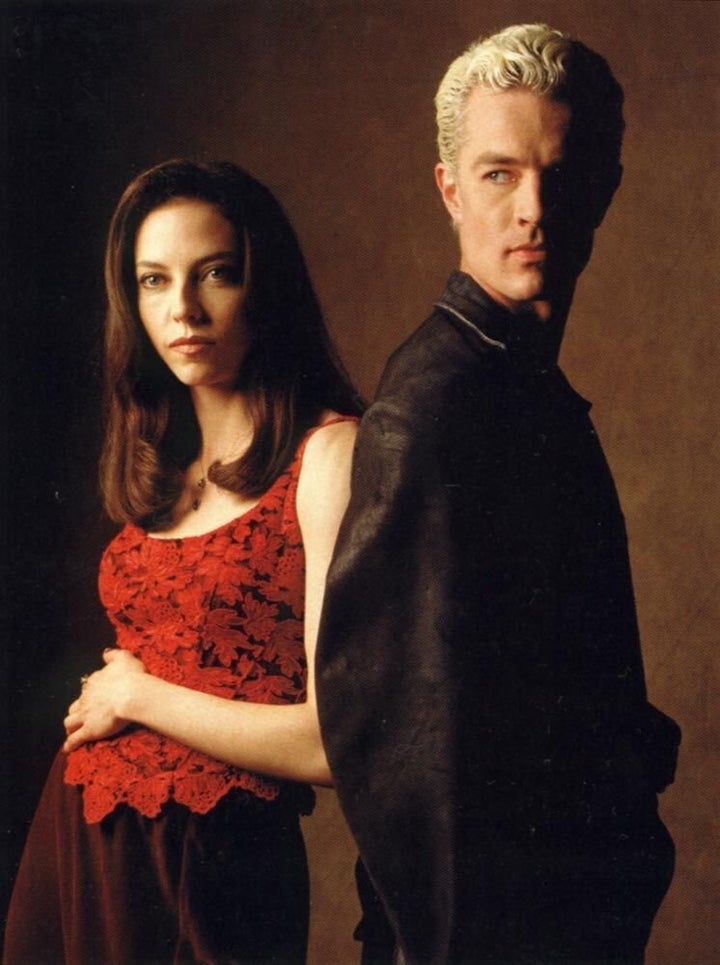Ten years since Buffy the Vampire Slayer's last episode...
Doesn't time fly when you're having fun!
During its seven-year run (1997-2003) Buffy the Vampire Slayer won three Emmys and was listed tenth on Entertainment Weekly's 100 Greatest Shows of All Time, second on Empire's 50 Greatest TV Shows of All Time and third on TV Guide's Top 25 Cult TV Shows of All Time. It's neither joke nor exaggeration to say that Buffy is one of the greatest TV series ever made, easily bearing comparison with Star Trek and MASH, and influencing later series, such as True Blood and the rebooted Doctor Who.
Spin-offs include the TV series Angel and the comic series Buffy Season Nine, and since its cancellation, Buffy merchandise has proliferated, with the publication of numerous novels by Simon & Schuster as well as comics, video games and academic texts. Buffy fandom is also alive and well, particularly online. More Buffy fan-fiction stories have been written than for any other TV series ever made.
For example, FanFiction.Net (the largest such database in the world) contains over 46,000 Buffy stories, all written by enthusiastic, dedicated fans. The only other TV series to come anywhere near that number is Star Trek, with a relatively measly 23,000 stories based on five related series aired over a forty-year period. Buffy fans have produced over twice that amount for one single seven-year-long series, and continue to do so.
So what first guided them along the rocky brick road which led them to and past the Fall of Sunnydale?
Well, Buffy's creator, Joss Whedon, had turned the vampire genre's traditional conventions on their head by making a short, blonde girl - usually a silly, screaming stereotype polished off by Christopher Lee as an apéritif before the battle royal between the befanged baddie and the handsome male hero - into the main protagonist.
One girl in all the world, chosen to fight the forces of darkness. Possessing extraordinary strength and reflexes, and in the case of Buffy Anne Summers, a sharp wit masking a certain vulnerability.
Buffy the vampire slayer. Resident of Sunnydale, a small California town sited on the Hellmouth (a mystical convergence of evil forces), leader of the Scooby Gang (a collection of assorted local sidekicks who helped her fight evil), lover of Angel (the tormented vampire cursed with a soul and conscience, known as Angelus in his soulless incarnation) and Spike's object of desire. Spike, also known as William the Bloody, was a soulless vampire with platinum hair, chiseled cheekbones, a dry wit and a serious case of the hots for his own nemesis.
Joss Whedon had the ability to make the viewer care about his characters. He took the risk of allowing his creations to grow, develop and explore their dark sides. Together with producer Marti Noxon, he wrote 144 multi-layered Buffy episodes which combined comedy, drama and tragedy in order to explore typical teenage issues within a fantastical context.
Some teenage girls think the world will end if they're not allowed to do their own thing. In Buffy's case, it just might.
So Buffy the Vampire Slayer, buoyed up by fine writing, sympathetic characters and a high thematic concept which harked back to tales of myth and legend from antiquity, became one of the best shows of all time.
Most TV shows seem either to be about cutting someone up (ER), arresting somebody (Law & Order), or arguing in court (Perry Mason to The Good Wife, and counting).
But despite its hip dialogue and typical US high school setting, chock-full of beautifully coiffed teens sporting rows of achingly white teeth, Buffy instead told classic tales of high adventure. Of heroes and their ladies. Of knights and dragons, and quests for swords and grails.
Admittedly, Joss and Marti did subvert the form just a tad, making the hero a lady, the white knight a bit of a nerd and one of the dragons a conscience-stricken object of the lady's desire, but respected the genre as they did so. If Buffy was Arthur and the Scythe her Excalibur, then the Scooby Gang were her Knights of the Round Table. The school librarian, Rupert Giles, was also Buffy's watcher, appointed to this post by the Council (a British-based organisation which oversaw the Slayer's duties) and in time he became her Merlin and his library their Camelot.
And woven within this tapestry of timing, writing, broadcasting and TV trendsetting, there was Spike, the sarcastic vampire and sometime gentle poet, with devilish good looks and serious street cred, the unexpected darling of the fans and runaway ratings-winner for the series.
It takes many tales to make up a legend, though, and Spike had a demonic girlfriend called Drusilla. Dru was beautiful, blue-eyed, brunette and bonkers. She dressed in what's been described as "a cross between a Victorian period look and the Kate Moss heroin chic fashion look" which made her the Nancy Spungen to Spike's platinum-blond Sid Vicious.
Like Spike, Dru was indeed a killer. But in the same way that he was a lovelorn poet at heart, she was also a gentle girl, and although Buffy and Angel had the first televisual romance between a human and a vampire, which inspired films and TV series like the Twilight saga and True Blood to explore the themes of human/demon relationships and the integration of the undead into human society, Spike and Dru were the first vampires to be depicted as something more than one-dimensional bad guys and gals, basically just there to be staked by Buffy to the accompaniment of wry and trendy quips like "we haven't been properly introduced, I'm Buffy, and you're history," or "All right, I get it. You're evil. Do we have to chat about it all day?"
Unlike the hopelessly conflicted Angel, Spike and Dru seemed more like straightforward old-school vampires - soulless killers who hated the sun and the Scoobies. However they were also a couple who loved each other and showed emotional vulnerability, thus enabling Whedon's viewers to relate to them as beings, if not human beings. The first true vampire/vampire romance on television, which helped pave the way for the complex social questions posed more recently by True Blood. What if, instead of just being befanged baddies there to be killed, Spike and Dru moved in next door to you and tried to be good neighbours?
Or, in my case, good flatmates.
Drusilla the vampire, my flatmate.
Perhaps the plain and simple truth contained within the outward absurdity of that statement shows what made Buffy different from so many other shows, what made it so great, and why I was so drawn to a character so far out of the loop she might as well have been on Mars.
In Lichtenberg, Marshak and Winston's 1975 book on Star Trek fandom, Star Trek Lives!, they speculated that:
"television people have often thought that the trick was: Offend nobody very much, please nobody very much, and hope against hope to get your slice of the pie ... a trend which has led to the "one big rerun" effect, to "playing it safe."
Star Trek took a radically different tack.
It wanted to be loved.
And so, I think, did Drusilla. Enough for her to light a fuse which burned across an ocean and helped a middle-aged Asperger find his muse on Sunset Boulevard.
She was not Caesar but Ophelia, but when will come such another?
Not soon, I fear, for too many TV people still think the thing to do is play it safe and settle for a thimble's piece of pie rather than risk growth, development and a dance with the darker side of life.
Joss Whedon once said he'd "rather have a show that a hundred people need to see than a thousand like to see."
He was right.
It's a risk to feel fond of a gentle killer looking for love.
But Dru, Dru, it'll always be you, Dru...
James Christie is the author of Dear Miss Landau. He was diagnosed with Asperger Syndrome, a mild form of autism, at the age of 37 in 2002. He lives and works in Glasgow.

